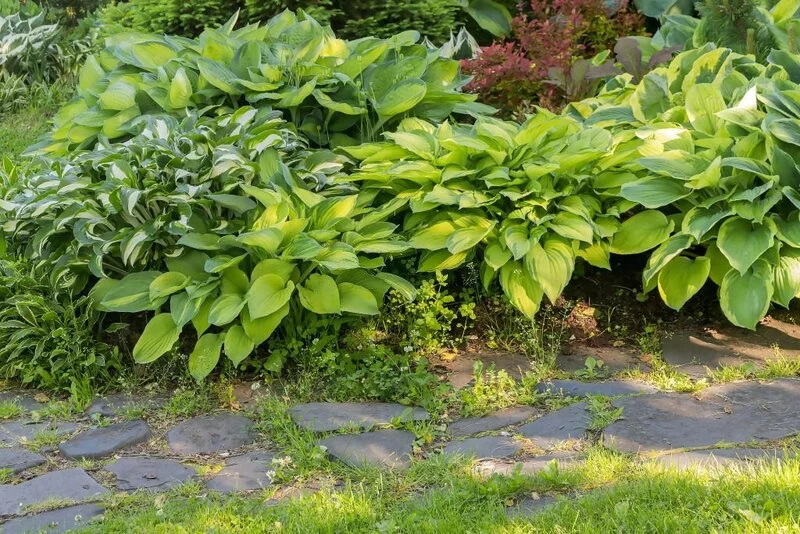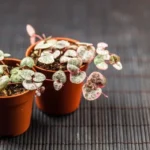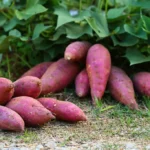Hello, fellow gardeners! Today we’re tackling a common question that plagues many Hosta growers – why are my Hostas turning yellow? Hostas are popular plants in many gardens due to their vibrant green foliage and shade-loving nature. But even these hardy plants can sometimes show signs of distress, like yellowing leaves. This guide will help you understand what might be causing this and how you can restore your Hostas to their natural, healthy state.
- 🌱 BALANCED NUTRIENTS: Our fertilizer contains a balanced ratio of 10% nitrogen, 10% phosphorus, and 10% potassium – the three primary nutrients that plants need for growth and development. This balanced formula ensures that your plants receive the necessary nutrients for optimal growth and health.
- 🌱 ALL-PURPOSE APPLICATION: Our all-purpose fertilizer is suitable for use on all types of plants, including vegetables, flowers, fruit trees, and ornamental plants. This makes it an ideal choice for gardeners who want a versatile and effective plant food.
- 🔬 PROFESSIONAL-GRADE FORMULA: Our 10-10-10 fertilizer is a professional-grade product that ensures steady and lush growth. Our fertilizer contains fast-acting ingredients that provide your plants with immediate nutrition for optimal growth and health.
- 👨🌾 HIGH-QUALITY INGREDIENTS: Our fertilizer is made with high-quality ingredients and is free from harmful chemicals and additives, making it safe for use around children and pets.
- 🌸 SLOW-RELEASE TECHNOLOGY: Our fertilizer also comes in a slow-release formula that provides your plants with the necessary nutrients for up to 40 days after application, reducing the need for frequent reapplication. This feature makes it an ideal choice for busy gardeners who want lush, healthy gardens without the hassle.
Overwatering or Poor Drainage
Like people, plants also have a just-right amount of water they prefer. Too little and they get thirsty, too much and they start to feel like they’re drowning. Overwatering is a common cause of yellowing leaves in Hostas. If you’re watering your Hostas too often, or if the soil isn’t draining well, your plant’s roots may become waterlogged. This can cause the roots to suffocate and start to rot, leading to those worrying yellow leaves.
How can you tell if this is the problem? Well, if the soil around your Hostas always feels wet, or if you see standing water after you water your plants, you might be overwatering or dealing with poor drainage.
To solve this issue, try watering your Hostas less frequently and make sure they’re planted in well-draining soil. If your soil is heavy clay, consider adding organic matter or gravel to improve its structure. And remember, it’s better to water deeply and less often, than to give your plants a little water every day. This encourages their roots to grow deep and strong, making for a healthier plant overall.
Nutrient Deficiency
Just like we need a balanced diet to stay healthy, plants too need a variety of nutrients for their well-being. If your Hostas are turning yellow, it might be a sign they’re missing out on some key nutrients. Nitrogen, in particular, is crucial for keeping leaves green. Without enough of it, your Hostas may start sporting yellow leaves.
To check if this is the issue, take a look at your Hostas’ leaves. If they’re yellowing from the bottom up, or if the veins remain green while the rest of the leaf turns yellow, a nutrient deficiency might be the culprit.
To rectify this, consider giving your Hostas a nutrient boost. Use a balanced, slow-release fertilizer, or for a more organic approach, try adding compost or well-rotted manure to your soil. These steps will provide your Hostas with the nutritional smorgasbord they need to thrive.
- Miracle-Gro Shake ‘N Feed All Purpose Plant Food feeds plants for up to 3 months, and nourishes above and below the soil
- This plant food contains vital micronutrients to grow stronger, vibrant, and more productive plants (vs unfed plants)
- Use this all-purpose plant food with most plants, whether indoor or outdoor container plants or in-ground plants, and most plant types, including flowers, vegetables, and herbs
- Apply this garden product evenly onto the soil and work into the top 1-3 inches of soil for in-ground plants, or lightly work into the soil of established container plants; water to start feeding
- Reapply Miracle-Gro Shake ‘N Feed All Purpose Plant Food every 3 months and water regularly for a beautiful garden all season long
Pests and Disease
Unfortunately, Hostas aren’t just a favorite among gardeners – pests and diseases also love them! If your Hostas are turning yellow, you might have unwelcome visitors causing havoc. Some common culprits include slugs, snails, and diseases like root rot or leaf spot diseases.
Slugs and snails are sneaky little creatures that feast on your Hostas under the cover of darkness. They munch on the leaves, leaving behind small holes, which can cause the foliage to yellow and wilt.
Diseases like root rot can cause yellowing and wilting of the leaves, starting from the base of the plant. Leaf spot diseases can cause yellow or brown spots on the leaves which can lead to overall yellowing if the disease is severe.
If you spot these pests or symptoms, don’t despair! Try using organic pest control methods, like introducing natural predators or using slug traps for slug problems. For diseases, it might be best to remove and dispose of affected parts of the plant to prevent further spread. As always, prevention is the best medicine, so keep your plants healthy with good watering, feeding, and spacing practices to make them less attractive to pests and diseases.
Environmental Factors
Now, let’s talk about the weather! Just as a sudden change in climate can make us uncomfortable, environmental factors can also affect the health of your Hostas, leading to yellowing leaves. Too much sunlight can scorch your Hostas, causing their leaves to turn yellow or develop brown, crispy edges. These plants love shade, so consider moving them to a spot with less direct sun if you notice signs of sunburn.
Temperature fluctuations, both hot and cold, can also stress your Hostas, resulting in yellow leaves. Try to keep their environment as stable as possible, especially during the changing seasons.
And lastly, if you’ve recently moved or transplanted your Hostas, they may experience ‘transplant shock’, which can also lead to yellowing. If this is the case, don’t panic! Just give them some time to adjust to their new surroundings, making sure they have adequate water and are protected from extreme weather.
- All Purpose Mix; Nutrient Enrichment & Drainage Control for Fiddle Leaf Fig Trees & All Other Indoor Houseplants
- Mix Made With Coconut Coir — A Natural Soil Additive that Retains Water & Drains Excess Moisture Away from Roots
- Soil Comes Enhanced with Fiddle Leaf Fig Food to Increase Flushing, Green Foliage Every 6 Months
- Lightweight Formula Does Not Suffocate Roots; Allows them To Grow Freely
- Soil Comes in Heavy-Duty, Re-Sealable Bag Perfect for Storage or Later Use
Conclusion
In the world of gardening, it’s always a bit of a heart-stopper when you notice something off about your plants. But with your Hostas, remember that yellow leaves are just a cry for help. By paying close attention to watering, nutrition, pests, and environmental conditions, you can keep your Hostas happy and bring back their vibrant green glory.
Don’t let the sight of yellow leaves discourage you. Gardening is all about learning and growing – both for you and your plants. Keep going, and soon you’ll have a green thumb to match your healthy, thriving Hostas!






